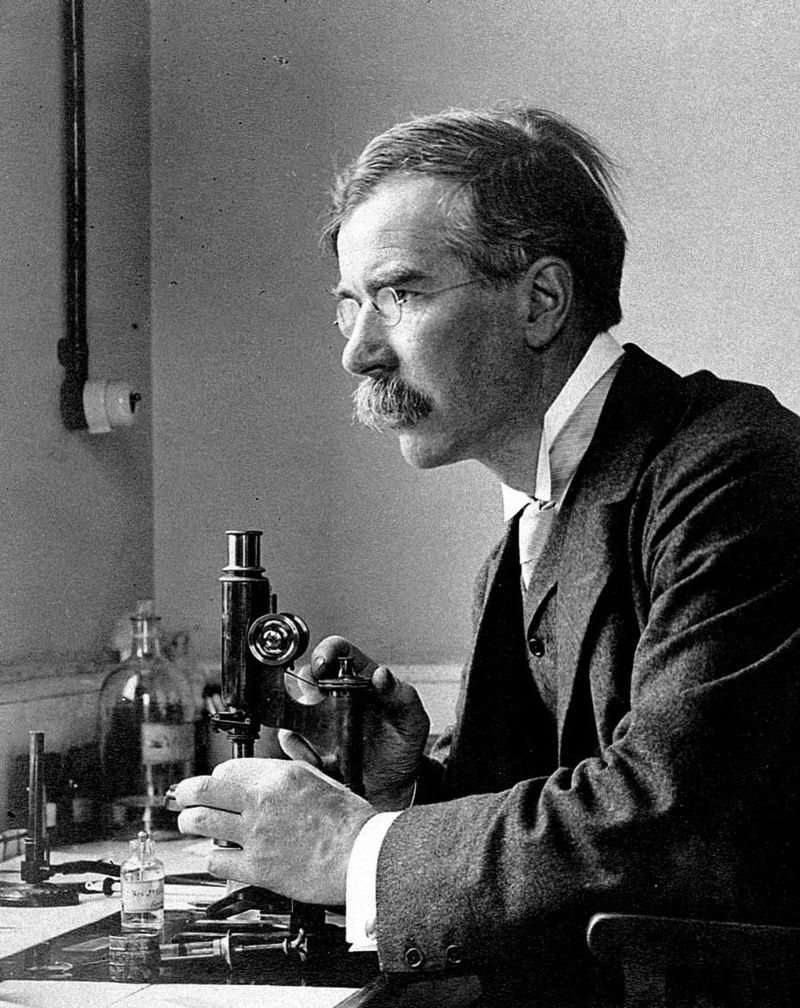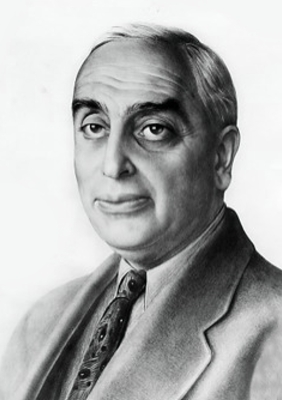<Back to Index>
- Bacteriologist and Immunologist Almroth Edward Wright, 1861
- Pediatrician Béla Schick, 1877
PAGE SPONSOR

Sir Almroth Edward Wright (10 August 1861 - 30 April 1947) was a British bacteriologist and immunologist.
He is notable for developing a system of anti - typhoid fever inoculation, recognizing early on that antibiotics would create resistant bacteria and being a strong advocate for preventive medicine.
Wright was born at Middleton Tyas, near Richmond, North Yorkshire into a family of mixed Anglo - Irish and Swedish descent. He was the son of Reverend Charles Henry Hamilton Wright, deacon of Middleton Tyas, who later served in Belfast, Dublin and Liverpool and managed the Protestant Reformation Society. His mother was the daughter of Nils Almroth, Governor of Swedish Royal Mint in Stockholm. His junior brother Charles Theodore Hagberg Wright became a prominent librarian.
He studied medicine at Dublin University. In the 19th century, Wright worked with the armed forces of Britain to develop vaccines and promote immunization.
In 1902 Wright started a research department at St Mary's Hospital Medical School in London. He developed a system of anti - typhoid fever inoculation and a method of measuring protective substances (opsonin) in human blood. Citing the example of the Second Boer War, during which many soldiers died from easily preventable diseases, Wright convinced the armed forces that 10 million vaccines for the troops in northern France should be produced during World War I. Among the many bacteriologists who followed in Wright's footsteps at St Mary's was Sir Alexander Fleming, who in turn later discovered lysozyme and penicillin. he was elected a Fellow of the Royal Society in May 1906.
Wright warned early on that antibiotics would create resistant bacteria, something that has proven an increasing danger. He made his thoughts on preventive medicine influential, stressing preventive measures. Wright's ideas have been re-asserted recently — 50 years after his death — by modern researchers in articles in such periodicals as Scientific American.
He also proposed that logic be introduced as a part of medical training, but his idea was never adopted. Wright also pointed out that Pasteur and Fleming, although both excellent researchers, had not actually managed to find cures for the diseases which they had sought cures, but instead had stumbled upon cures for totally unrelated diseases.
The Unexpurgated Case Against Woman Suffrage by Sir Almroth Wright M.D. F.R.S. was published in 1913 and is available on the Project Gutenberg website.
Wright was immortalized by George Bernard Shaw as Sir Colenso Ridgeon in the play 'The Doctor's Dilemma' written in 1906.

Béla Schick (16 July 1877 - 6 December 1967) was a Hungarian born American pediatrician. He is the founder of the Schick test.
Schick was born in Balatonboglár, Hungary, and brought up in Graz, Austria, where he attended medical school. In 1902 he joined the Medicine Faculty of the University of Vienna where he remained until 1923. Studying problems of immunity, he and Clemens von Pirquet first coined the term 'allergy' as a clinical entity. His discovery of a test for susceptibility to diphtheria ("the Schick test") made him world famous. From 1923 he directed the Pediatric Department of Mount Sinai Hospital, New York. From 1936 he was also professor at Columbia University. From 1950 to 1962 Schick headed the Pediatric Department of Beth-El Hospital, Brooklyn, NY. His later interests included the nutrition of the newborn and feeding problems in children.
Young Bela Schick quoted the Talmud: "The world is kept alive by the breath of children," to help persuade his father to allow him to pursue continued education in pediatrics, rather than to join the family grain merchant business in Graz, Austria. Schick became assistant at the Children's Clinic in Vienna, and later associate professor of pediatrics at Vienna University.
He emigrated to the United States, and in 1923 became pediatrician - in - chief at New York's Mount Sinai Hospital. He later (1936) was appointed clinical professor of pediatrics at Columbia University. Schick made important studies on scarlet fever, tuberculosis and the nutrition for infants... but gained international renown for the Schick Test. This test determined susceptibility to diphtheria, and eventually led to the eradication of the childhood disease that attacked 100,000 Americans in 1927, leading to about 10,000 deaths.
A massive five year campaign, coordinated by Dr. Schick, virtually eliminated the dreaded disease that had taken countless young lives since it was first mentioned in the sixth century writings of Aëtius Amidenus. As a part of the campaign, 85 million pieces of literature were distributed by Metropolitan Life Insurance Company, with an appeal to parents to "Save your child from diphtheria." These illustrated brochures were created by a talented young artist who had recently emigrated from Germany - Gerta Ries. Remarkably, this same Gerta Ries (Wiener) was commissioned over 75 years later to create the sculptured tribute to Dr. Béla Schick for the Jewish - American Hall of Fame. A residential building is named after him on the Stony Brook University campus.